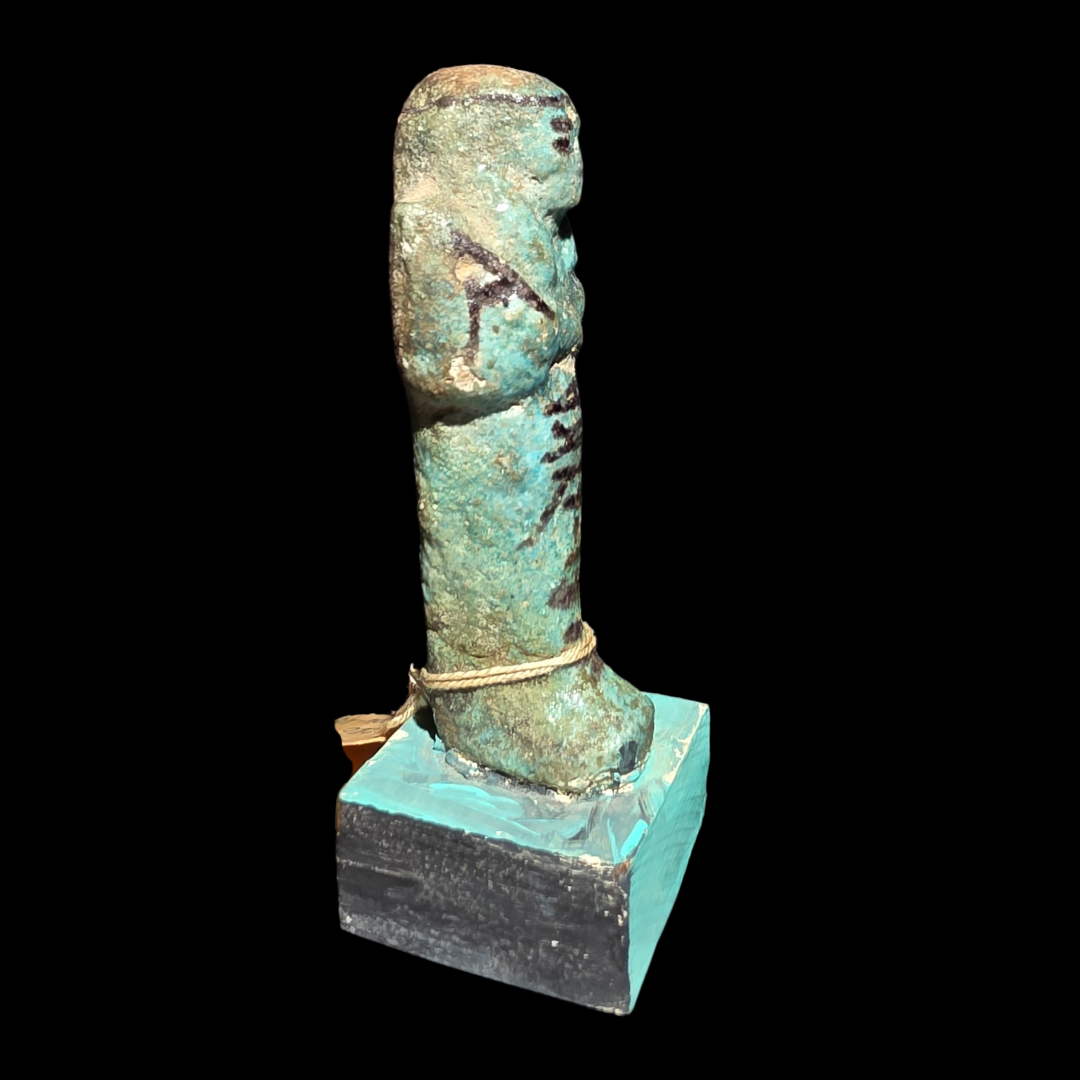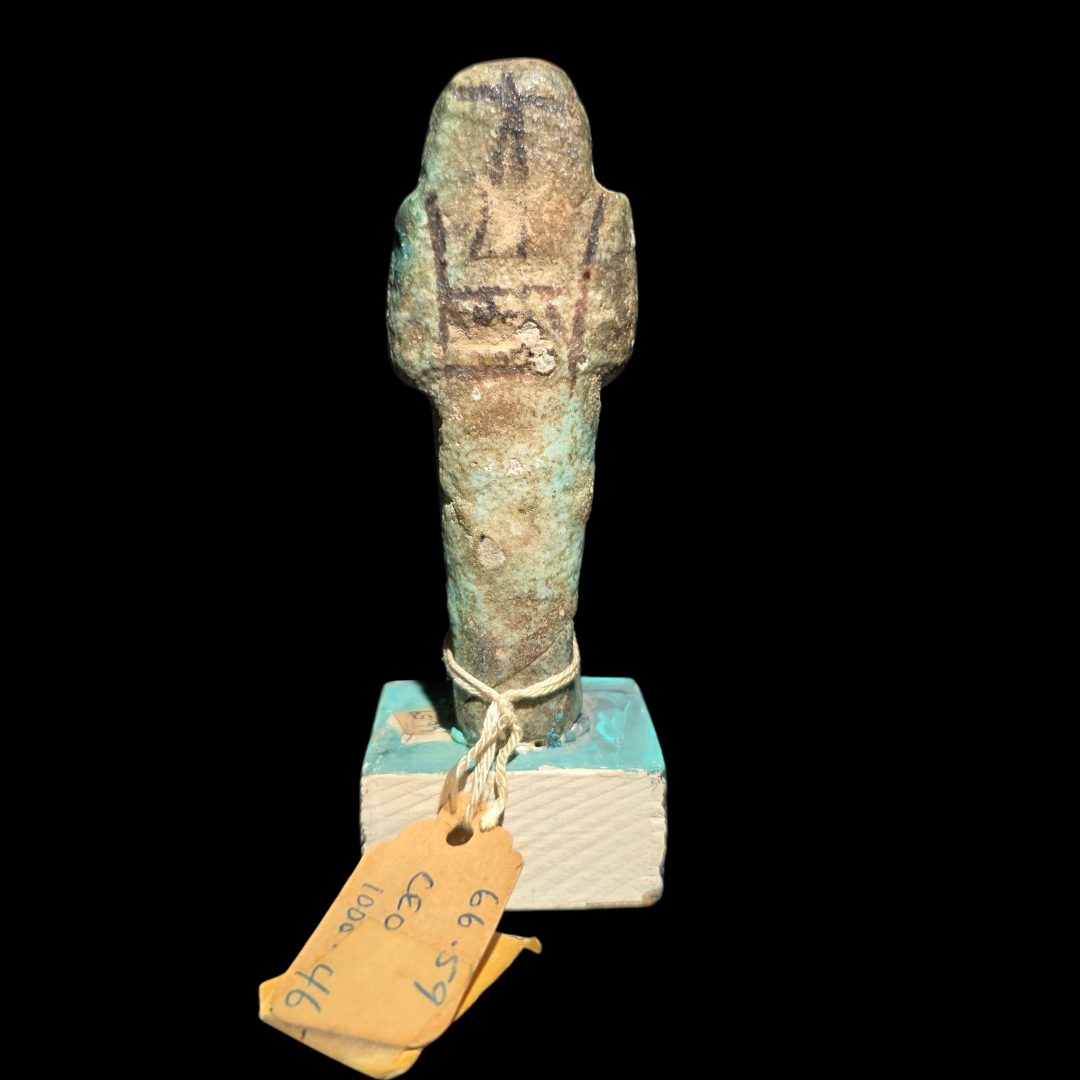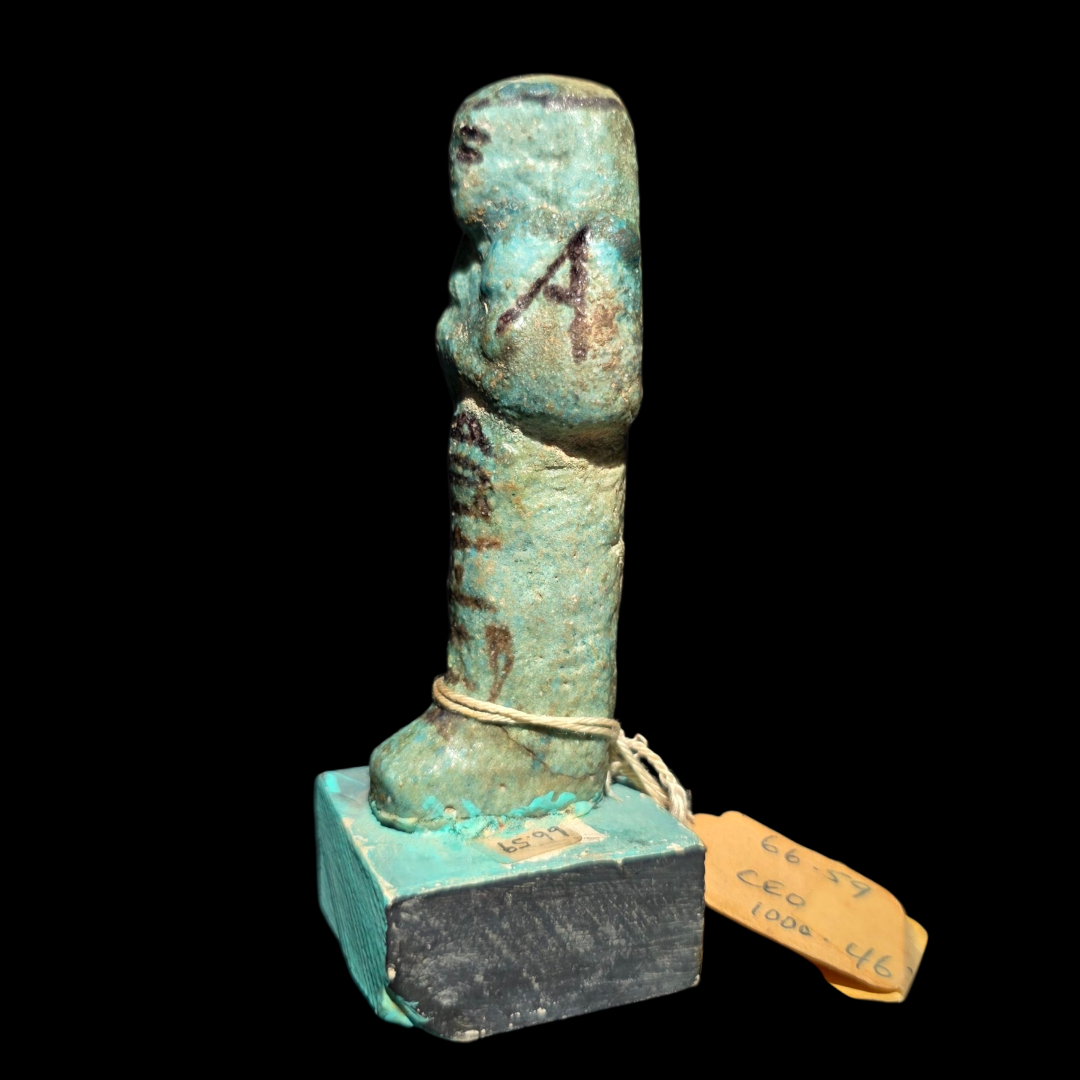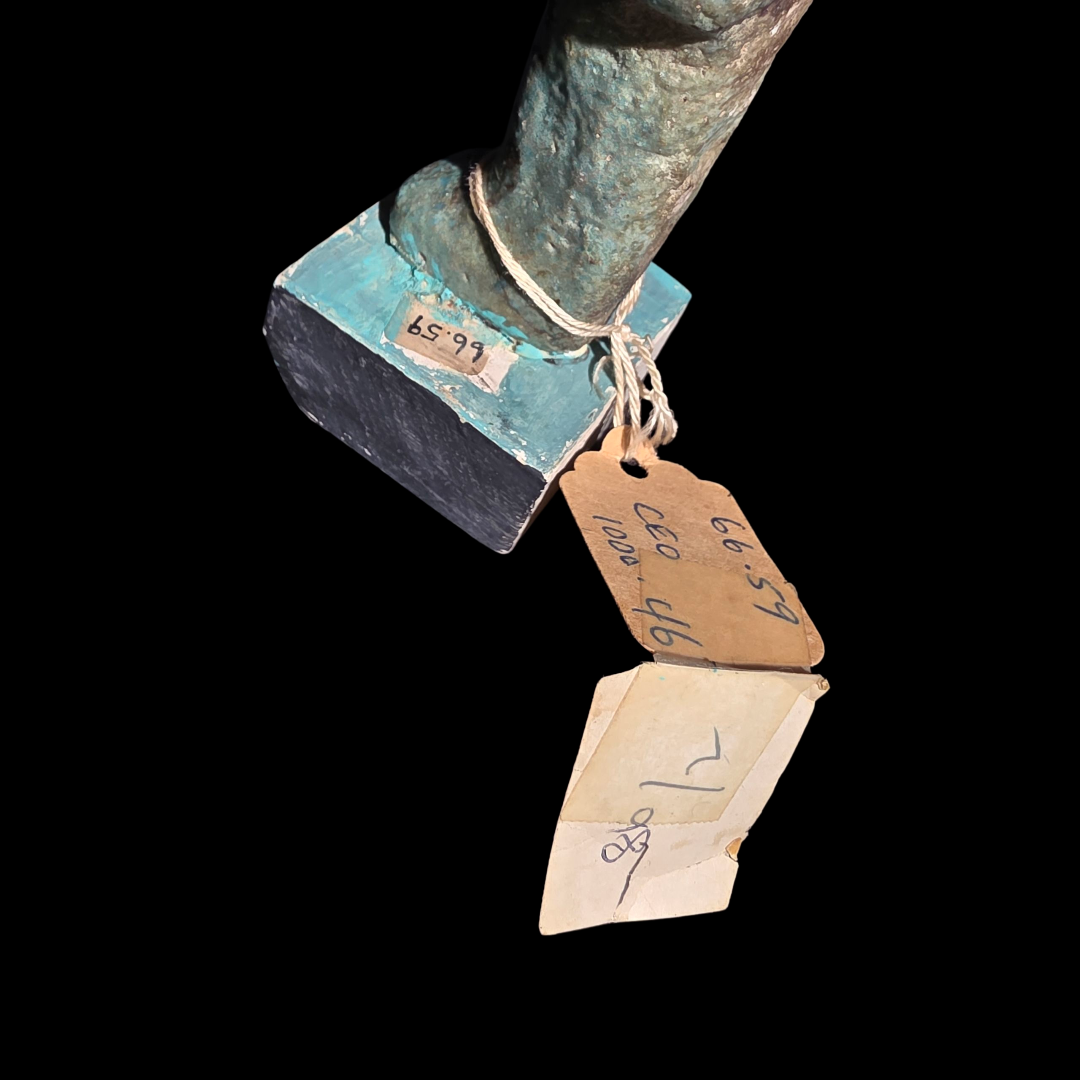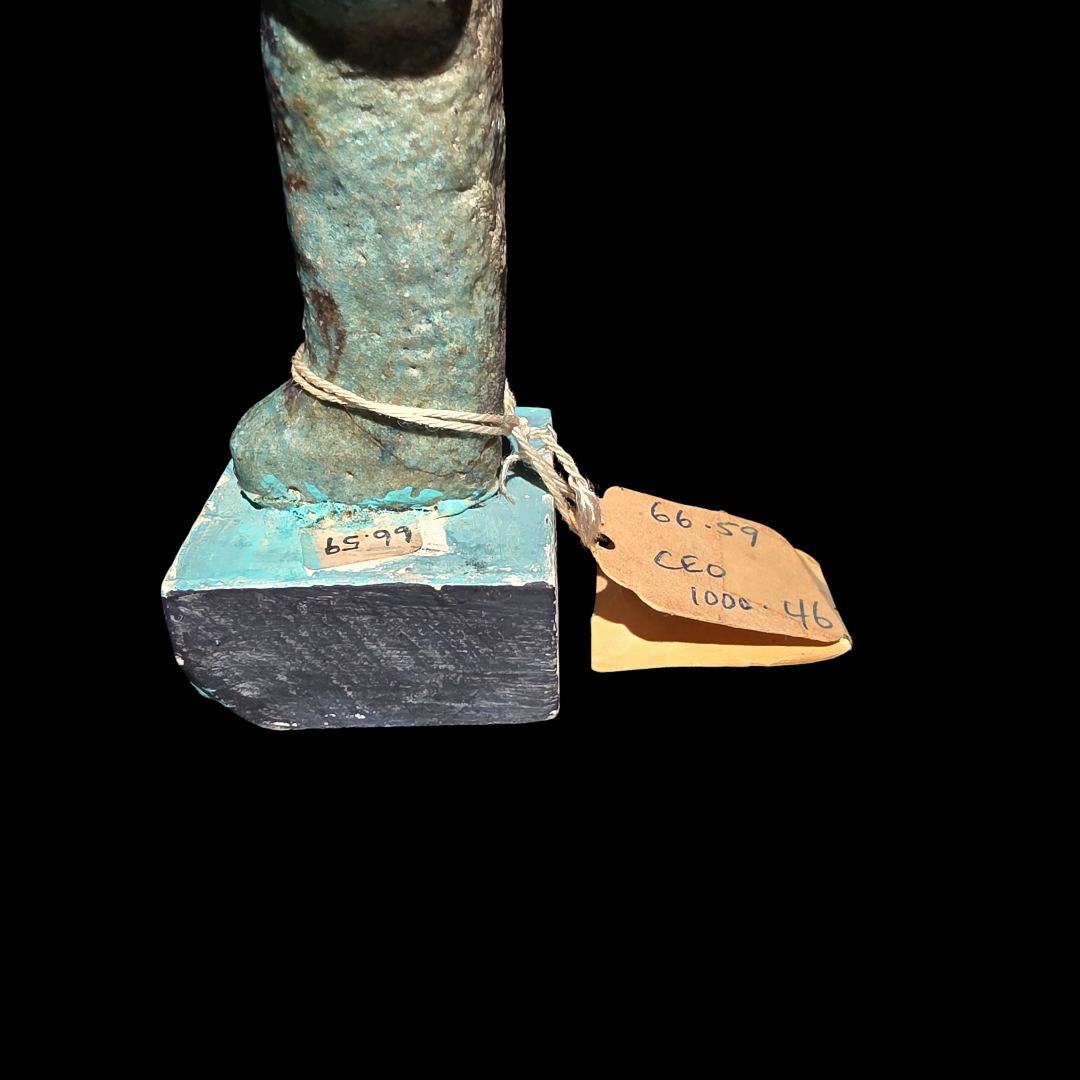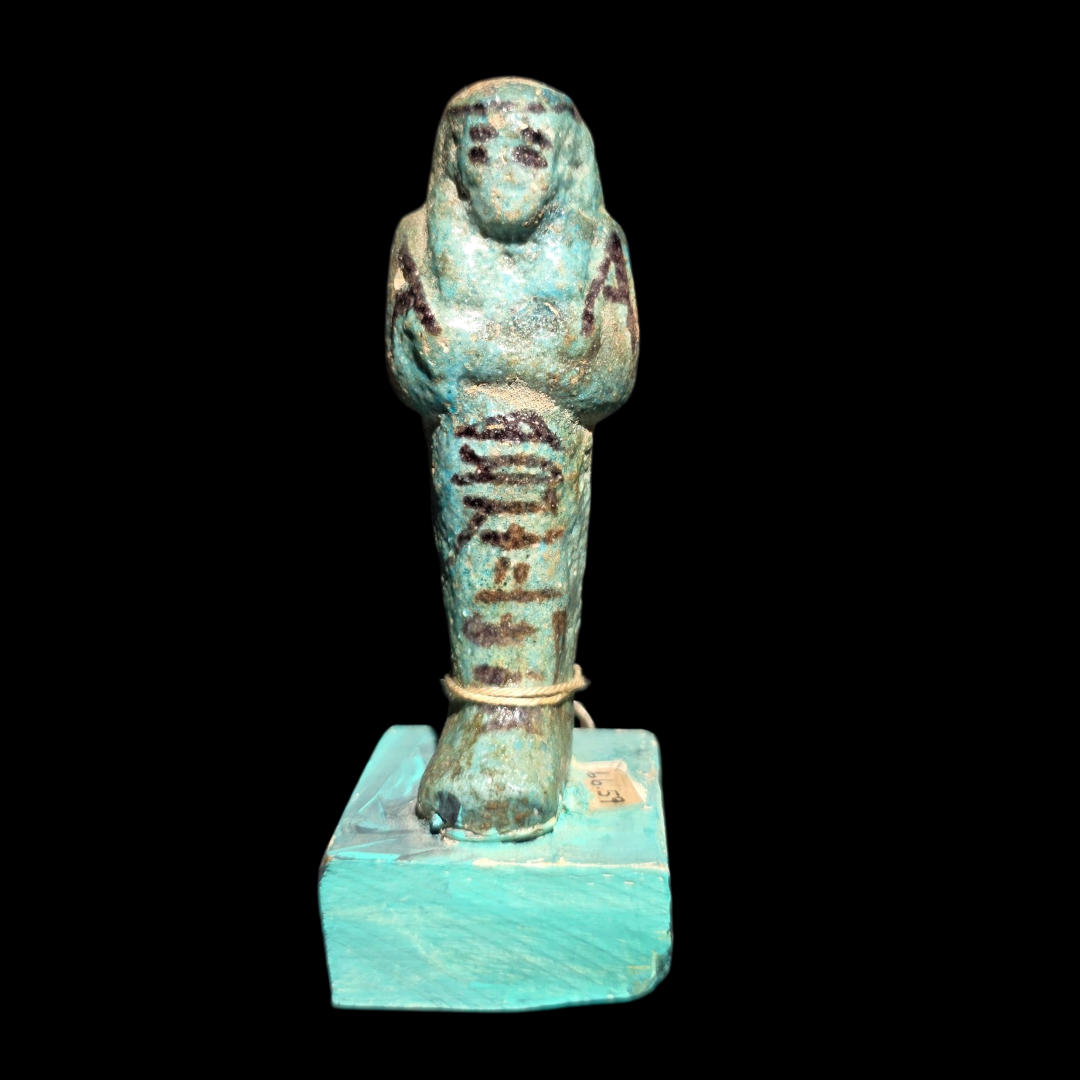
Ancient Ushabti of Wsir Nsy-n-Imn (The Osiris Nesyenamun)
Description
Faience Ushabti of Wsir Nsy-n-Imn (The Osiris Nesyenamun)
Third Intermediate Period, 21st Dynasty, ca. 1070–945 BCE
A compact mummiform ushabti attributed to Wsir Nsy-n-Imn (“The Osiris Nesyenamun”), cast in turquoise-blue glazed faience, with the arms crossed over the chest and faint traces of black-painted facial and inscriptional detail. Though some surface wear and burial encrustation are apparent, the vertical hieratic inscription naming the owner is still legible. The figure is mounted on an older painted base, bearing historical labels such as “65-99” and “66-59 C.E.O. 1000-46,” which reflect previous institutional cataloguing.
A closely comparable example is the Shabti of Amen-mose in the Liverpool collection, which shares a nearly identical mummiform pose, a plain tripartite wig, crossed arms holding hoes, and a vertical column of hieratic inscription naming Amen-mose as “The Osiris, the Beloved God’s Father of Amun-Re, justified.” Liverpool Museums+1 That specimen illustrates the typical stylistic and epigraphic conventions for private individual ushabtis of this period, and provides a valuable parallel for condition, glaze, and inscriptional layout.
Provenance:
Acquired in New York City between the 1960s and 1980s by Matthew McDonald Jr., who resided there for ~25 years and was associated with a local gallery. It remained in his collection for decades and then passed by family descent to his nephew, Marc Fertig, in Cape Coral, Florida, before being dispersed. The retention of period collection tags reinforces its documented collecting history.

